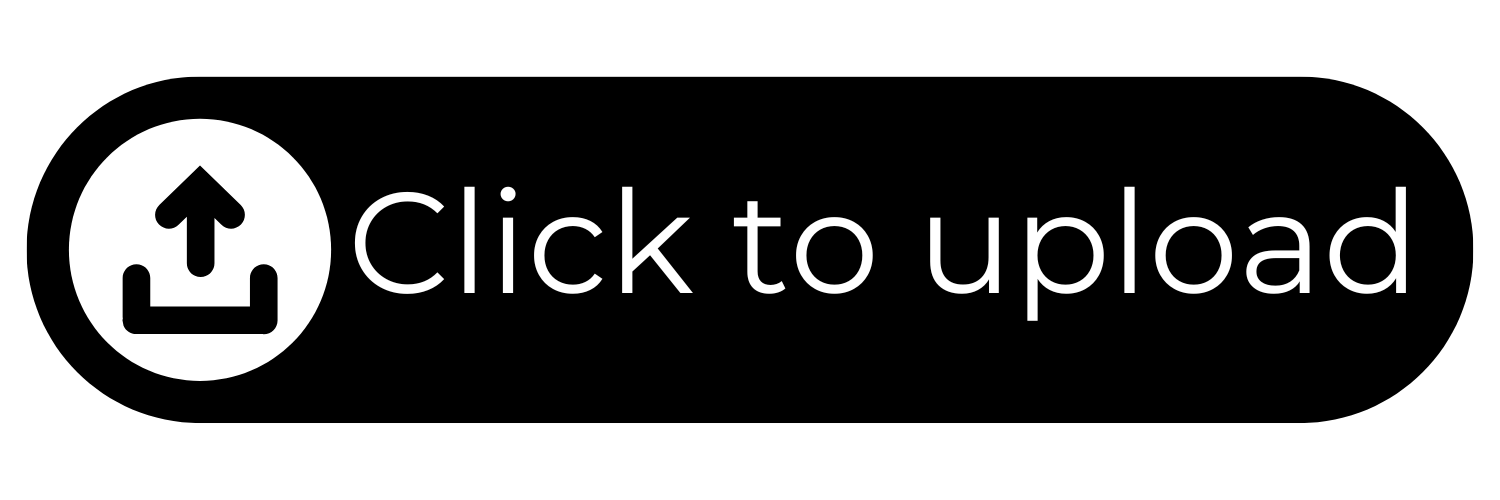News & Updates
Latest Insights from us
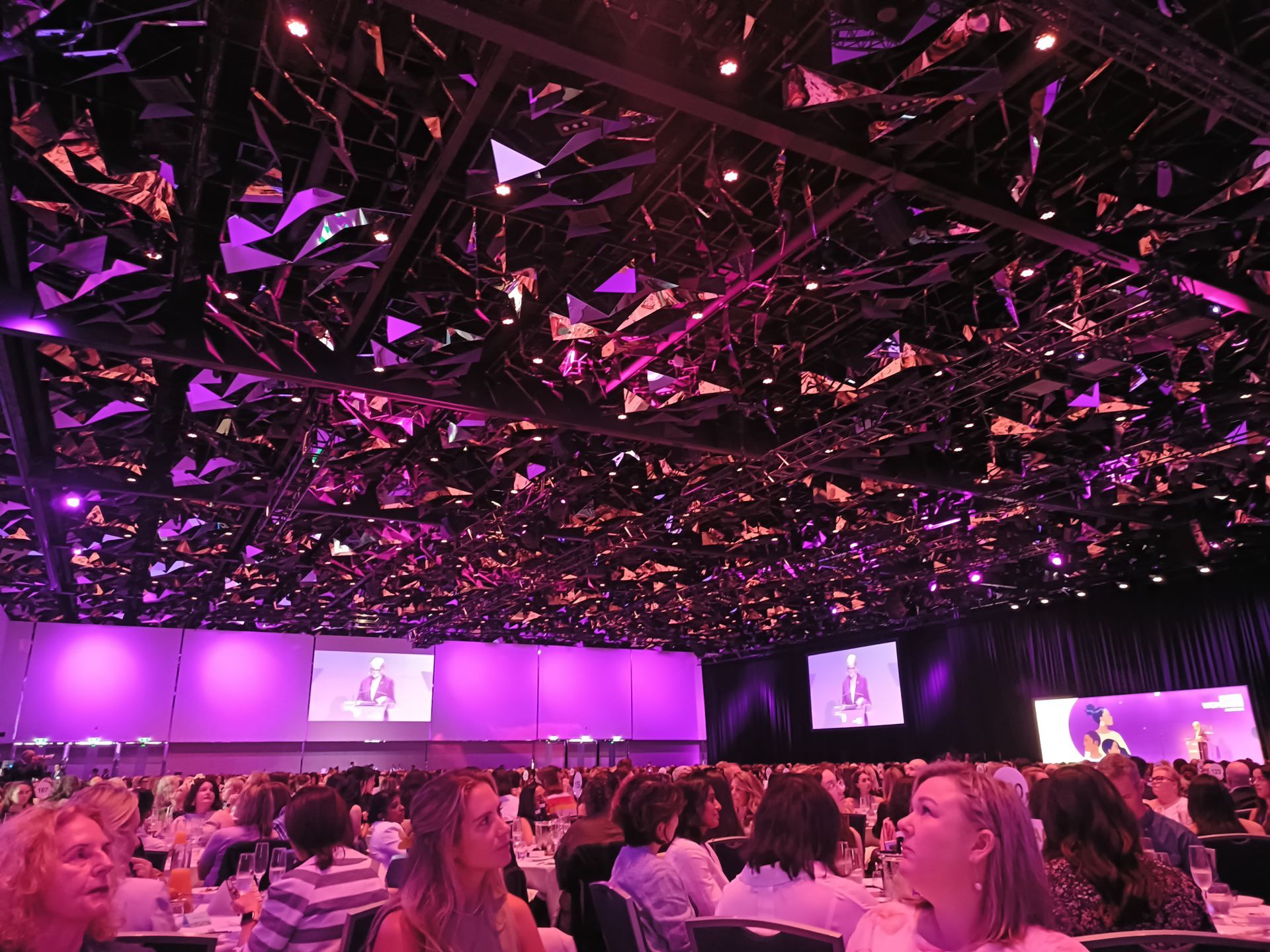
One of our team members, Mhairi, had the opportunity to attend this year’s UN Women Australia’s International Women’s Day (IWD) Luncheon. Held at the International Convention Centre (ICC) Sydney in Darling Harbour, the event brought together 1,700 attendees to celebrate the achievements of women and discuss the path forward. The theme for the event was #MarchForward, a call to action to continue advancing gender equality and ensuring that every woman and girl reaches her full potential. With UN Women operating in over 100 countries worldwide, the organization remains committed to delivering policies, programs, and standards that uphold women’s rights on a global scale. Powerful Voices, Lasting Impact The luncheon featured an incredible lineup of speakers, each bringing unique insights and personal experiences to the conversation: Her Excellency the Honourable Sam Mostyn AC , Governor-General of Australia, shared her experiences meeting women across Australia who ‘turn promises into progress.’ Her speech was a reminder of the real impact women make in their communities every day. Celeste Barber , the beloved actor, comedian, and author, brought her signature wit and passion to the stage. She emphasized the importance of taking action over just talking about change, stating she is a firm believer in ‘a little less conversation and a little more action’ when it comes to tackling social injustices. She also shared her best business advice: to be 100% unashamedly ‘me.’ Mary Robinson , Former President of Ireland, was another notable speaker. She had recently sat down with Simone Clarke, CEO of UN Women Australia , to discuss the ongoing fight for gender equality and the importance of keeping the momentum going. A Historic Year for Women’s Rights This year’s IWD coincided with two major milestones in the fight for gender equality: 30th anniversary of the Beijing Declaration , adopted at the 1995 Fourth World Conference on Women, which set out a framework for gender equality globally. 50 years since International Women’s Year (1975) , when the United Nations officially recognized March 8th as International Women’s Day . Both anniversaries serve as a powerful reminder of how far we have come—and how much work still lies ahead. Mhairi found the UN Women Australia’s IWD Luncheon to be an inspiring and thought-provoking experience. The event reinforced the idea that real change happens when words turn into action. As we move forward under the banner of #MarchForward , let’s continue to advocate, support, and uplift one another in the pursuit of true gender equality.

A perfect storm in from Western Australia The collision of talent shortages and a self-imposed island state The global pandemic, coupled with the climate change movement has created a momentum that is forcing corporations to review their purpose and impact. Environmental, Social and Governance (ESG) measures are now taking a front seat in corporate conversations across Australia, and perhaps most notably in the mining, resources and energy industries. In Western Australia we find we are in the perfect storm – a candidate sparse market combined with authentic and considered socially conscious career seekers looking for employers of diverse and engaged workforces with an environmental and clean energy focus. For the mining industry, which has often had one eye on the concept of “sustainability”, this has caused a flurry of ever-increasing activity. Although sustainability has been around for some time, understanding and measuring the direct impact on the performance of variables such as diversity and inclusion has been something of a dark art. Company ESG performance is increasingly a data driven and measurable necessity that investors, lenders and rating agencies are increasingly scrutinising and in some instances e.g., the black coal segment totally withdrawing investment. These nonfinancial metrics are set to cause change at all levels of industry, shedding light on diverse social and environmental risks. Many junior and intermediate miners are in the early stages of their ESG journey and have strategically or have been forced to review their purpose, their impact, and their role in society. As Western Australia has maintained its island-like status, mission critical talent shortages have been rife and have significantly impacted across all industries, resulting in corporations scrambling to attract and retain quality talent. The talent driven shift brought about by COVID has meant that higher salaries are no longer the only employee concern. Along with work life balance, companies have had to re-evaluate their ESG practices and how they demonstrate their performance on social and environmental issues. Candidate shortages aside, investors and lenders are also playing their part. Through our cousins in Europe, shareholders have seen the tangible value creation and shift in profitability that measured ESG initiatives and purposeful work have had. This is in part due to reduced costs, greater risk management and overall improved reporting on various factors. However, there is also evidence that corporate clarity of vision and purposeful activity have a great impact on productivity and performance, all driven by employee engagement. In the last 12 months, Beilby Downing Teal has been mandated to recruit a number of “ESG Managers”. These processes have given us a unique insight into the multi-faceted nature of this subject, the limited knowledge surrounding it and the problem of targeting traditional talent pools to take on these inaugural roles. Candidates from Environmental, Health & Safety, Community Engagement, Sustainability, Communications, HR and even Finance/Investment backgrounds can and have been considered. In an unproven marketplace, with organisations often unfamiliar with the nature of this role, we have searched for candidates with backgrounds covering more than one of these specialities. Handling strategy, regulators and implementing actionable deliverables requires a unique skillset and the ability to impact stakeholders across all aspects of a business. Where the ESG function fits in in an organisation structure is up for debate. In larger organisations, due to the strategic impact of ESG and its wider implications on overall purpose, the natural reporting line is to the CEO. However, in the smaller and mid-tier miners, the most tangible impact can be had by reporting through to the COO, depending on the stage of their operations. Overall, organisations and hiring managers have various elements to mull over – their purpose as it relates to ESG, ESG as a talent attraction and retention strategy and ultimately, who leads the charge within the company. Extractive industries globally have woken up to their place in the energy transition and must be able to demonstrate measurable, investable ESG plans to investors. Companies can expect to be faced with an increasingly competitive labour market, as environmental and social issues become real world business concerns. ESG as a function must not be seen as just part of a branding exercise, investors are beginning to demand transparent and measurable ESG initiatives. We can expect the adoption of ESG practices and the pace of change in WA to become as fast as anywhere in the world. Finding experienced ESG professionals to help navigate that change will become an increasingly challenging process. To date, the clear winners in the ESG war for talent are those with clearly articulated organisational values, competency frameworks, role clarity and purpose. This transparent evidence allows organisations to readily consider candidates with transferable competencies and candidates to align career choices with personal values. If you are feeling the impact of the current talent shortage in WA, reach out to our General Manager, Nick Verkerk, to find out how we can assist you to capture the right talent for your business. Article written by Nick Verkerk,

When it comes to preparing for an interview, where do you start? Being unprepared may leave you feeling anxious as you approach your interview, and could demonstrate a lack of interest in the organisation and role. Over preparing, whilst it seems like the logical thing to do, could potentially be your down-fall. A question outside of your extensive preparation may just throw you off track. The STAR method is a structured manner of responding to behavioural-based interview questions by discussing the specific situation, task, action, and result of the situation you are describing. SITUATION : Describe the context of the scenario/event. Example – Working with conflicting deadlines. TASK : Explain the task that was at hand including your responsibilities and expected outcome. Example – Two clients demanding their tasks were completed by close of business. Not enough notice was provided to action their requests within the required time frame. ACTION : Describe the specific actions you took to complete the task. Be specific about your personal involvement/responsibilities. Example – Asked a colleague for assistance to complete the tasks. Advised both clients that for future X amount of notice is required. RESULT : Explain the outcome. Example – The clients were appreciative their requests were actioned promptly and acknowledged future notice required. Give this a go next time you are preparing for an important interview! Article written by Hayley Heaton.
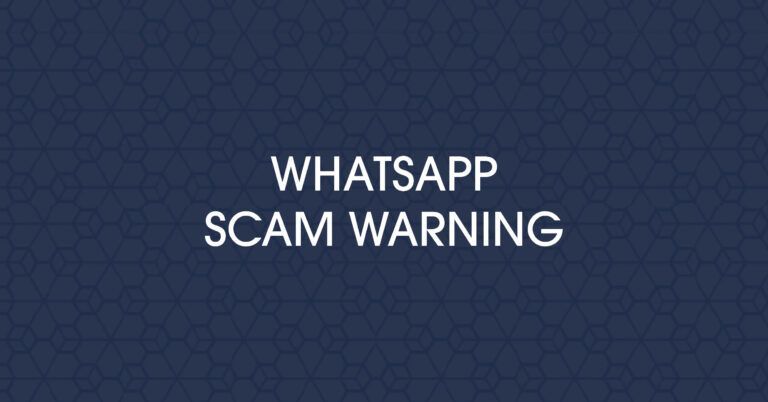
BDT have been alerted to a WhatsApp Scam where a person is claiming to be a BDT consultant looking to discuss career opportunities with candidates. We would never ask for personal details over messaging platforms. If you are concerned about a recent message please contact your local branch to verify the communication. For further information please visit www.scamwatch.gov.au Examples of the communications received

It could be time to leave your job. David* reached over to switch off his buzzing alarm clock, and his stomach tightened, with the sinking realisation that it was Monday. That feeling of a lack of excitement was getting to be an everyday part of waking up to go to work. David used to enjoy his job as Sales Director with a global capital equipment business. When he joined the company ten years ago he was really excited about his work and took every opportunity he could to work hard and achieve his and the company’s goals. He knew he was kicking some goals, and doing well because he had been promoted a number of times over the years. But now…well… where did the challenge go? Now it all just seems a bit routine, day in day out. The excitement David had when he first started working there – about what he was doing and the challenges ahead – had dissipated. He knew as well that he was probably not being paid at the right level for his job responsibilities as his friend Steve* was in a similar job for another company and earning $50K more. The thought of that bigger salary was enticing, plus the excitement of being somewhere new, with further advancement opportunities….was it just time to head for the exit? When is the right time to leave? We find that executives often ask us “when is a good time to leave a company? When should I look to new challenges and something to get me beyond my comfort zone? A recent executive I met with said “I know the products, I know the industry, I know our company and the processes and whilst it’s enjoyable, I feel like I am not pushing myself and have more to give”. There isn’t a simple answer to this; it really depends on what you are looking for and understanding the reasons why you might want to leave. Identifying the warning signs Lacking passion, being miserable or stressed are just a few of the triggers that give an indication of gearing up for facilitating a career change. Others include boredom, not feeling compensated for what you do, and lack of opportunity for promotion. An interesting overview here from The Guardian as we navigate Covid and a desire for new career challenges. Ready to quit your job? 17 questions to ask yourself first . Sometimes it’s not that obvious what you should do, like the executive I met with, who wasn’t unhappy exactly; just not feeling really excited and challenged. If you still believe in the company and are happy with the work culture, it can be worthwhile to really explore whether there are further challenges for you internally before you jump ship. What’s out there for me? But if your talents are untapped, there’s not that much to aim for in your current role and you have the niggling feeling that there might be better opportunities (with better pay!), it might be time to explore opportunities. If you do decide that leaving your job is the right decision, make sure you are well equipped with some good options before you make that crucial move. We’re lucky enough in Australia to have a fairly robust economy and though some sectors have been hit hard by Covid 19 and global economic conditions, we’re still pretty well placed for jobs compared to much of the rest of the world (the unemployment rate for Australia was at 4.6% in July 2021, according to the Australian Bureau of Statistics). Your age, financial responsibilities and family circumstances will also undoubtedly factor in your decision making process. We work closely with our executives and will help you really understand what motivates and excites you about a job (despite what you might think, it’s usually not all about the money!). If you love your job and are passionate about what you’re doing, going to work Monday morning is just another opportunity to do what you love. *not real name Article written by Stuart Chandler
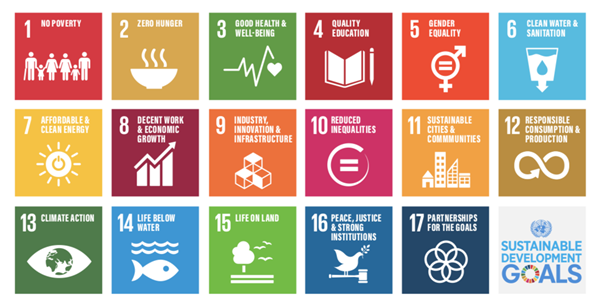
As COVID 19 vaccination rates continue to increase, the world moves towards some level of normality following the seismic upheavals of 2020 and the global pandemic. Here, in Australia, our impact was limited but our economic recovery and rebound has been remarkable given where we were 12 months ago. As global populations are being vaccinated the pressure mounts to open up and move on from the pandemic induced recessions. Pre pandemic, slowly but very surely, momentum was building with global economies, industries and organisations, driving change towards a sustainable future. This focus followed the United Nations 17 Sustainable Development Goals (SDGs) from the 2030 Agenda for Sustainable Development. Over the next fifteen years, countries will mobilize efforts to end all forms of poverty, fight inequalities and tackle climate change, while ensuring that no one is left behind. Fulfilling these goals will take an unprecedented effort by all sectors in society — and business must play a very important role in the process.

We recently moderated a panel discussion at one of WA’s leading Women in Mining & Resources, and Women in Leadership conferences. Through carefully scripted questions, we explored big businesses’ thoughts and ideas on gender diversity and inclusion. The panel comprised of several highly accomplished leaders from a selection of industries, including the Mining and Resources sector. Unsurprisingly, all panellists were acutely aware of the need to increase diversification within their organisations. They were enthusiastic about being involved in the discussion, not only to share how their companies were achieving diversity, but to see how others are approaching it too. Parental leave caused much discussion with panellists who recognised the need to get talented females back into the business and industry, but how? In the end, it came down to better planning, focus and communication. Do not forget those on parental leave. Keep them engaged through regular communication, opportunities for ongoing training and inclusion in social events. Be ahead of the curve and plan early. Collectively work on a plan for their return to the workplace that considers individual needs, discusses career progression, and provides access to training opportunities and mentors. The focus needs to be on developing talent and accelerating progression by enabling access to the resources required to excel. Ensuring equal parental leave opportunities are available to all genders also allows females a choice to return earlier. Another interesting point was to look differently at how teams are defined. Could we reshape executive roles to be more inclusive of female leadership? Shape the position to the person rather than the person to the position. For example, technicians who had families and chose not to continue the FIFO lifestyle may lack the years of site experience, however, could have the internal expertise and technical skills to manage the business unit. If another member of their team is strong in site experience with less developed softs skills, this could balance out the team. Pipelining and succession planning are also occurring more, with leaders looking three to four levels down for talent and nurturing that talent through career development. There is, however, caution around moving people up too quickly to fill diversity quotas. It needs to happen in a realistic timeframe, not to lose the technical underpinning required to succeed at an executive level. Another topical discussion was Champions of Change and the engagement of male allies for gender diversity within the business. This question sparked a conversation that perhaps it is not about identifying male allies and rather, instilling a company-wide culture, open to all dimensions of diversity. This can be accomplished by making sure all communication is unbiased in its delivery and all events, sponsorship arrangements and promotional activities are not skewed towards any one gender. It was also apparent that calling out bad behaviour, such as degrading comments, was more likely to elicit sustained cultural change. People learn from their mistakes and sometimes need to be reminded that their behaviour is not acceptable. The more communication around the issue, the better educated and more accepting teams become. Challenging bad behaviour outside of work environments was also flagged as important, such as when socialising with friends. Finally, there were some great points around the recruitment process. Search for candidates with the intention of equal gender representation at shortlisting. Consider methods used to attract this audience, and to challenge, or perhaps even reject, shortlists that do not comply. Encourage executive search partners, external recruiters, and internal functional and HR teams to work with that intention. When it comes to internal roles, go beyond placing the advertisement on internal communication platforms. Males and females view recruitment advertising differently. For example, a female may only apply for roles where she meets most of the listed criteria, whereas a male may be more inclined meeting comparatively less. The onus needs to be on direct line managers to approach females who they believe are suitable candidates for progression and encourage them to apply. The panel discussion was very productive and encouraged quality questions and ongoing discussion throughout the conference by attendees. It was frustrating for many to be having similar conversations from one year to the next. It is apparent we are still figuring out what works best, however, we are moving forward in the right direction and need to continue the discussion to maintain momentum.

Meet Victoria, Researcher for Beilby Downing Teal Queensland Brief overview of your job National and international candidate sourcing and selection of Senior / Executive level candidates primarily within the Mining & Resources, Engineering and Construction sectors. I Identify and approach potential candidates using a number of methods. Highlights and Challenges The roles I usually work on are generally the more difficult to find a candidate for, hence they are searched positions. So for some roles, I need to map the market and identify potential candidates in the organisations listed in our search strategies to make sure we have sourced everyone in that particular market. A challenge is definitely sourcing females for particular roles that are in male-dominated industries ie Mining Engineers, all types of Engineering roles, Mine Managers, Construction Managers, Estimators etc. How do you challenge gender bias and inequality or seek out and celebrate women’s achievements. I like to read and share articles online for example from The Female Lead. I like to read biographies of strong female role models and talk about them within my network. I recently read Jacina Ardern’s biography, I have also enjoyed Jacqueline Gold and Anita Roddick. I attend women in construction (NAWIC) and women in mining (WIMARQ) annual networking events and also the international women’s day breakfast. I listen to the journey’s that the speakers have been on to become the strong and/or successful role model’s that they are today. Any advice for those looking to follow your footsteps I think it’s important that we recognise the next generation and that we continue the progress we have made for women to work in any type of role in all industries. We have certainly come along way in the last 150+ years with the movement for gender equality and valuing women in the workforce. Identifying female role models to our younger generation is a great way to encourage ambition, one of my inspirations is Jacinda Ardern – my 4 year old knows who she is 🙂 .
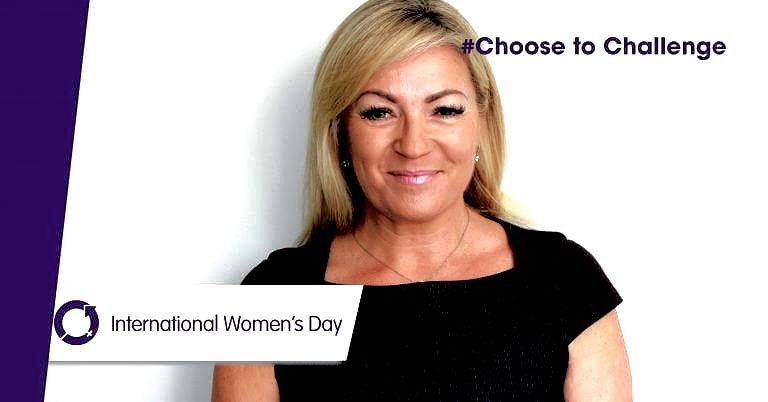
Meet Denise, National General Manager – Government I lead the team of Consultants who provide recruitment support services to the WA and NT public and local government sectors. In addition, I also work closely with clients and help support them through their recruitment needs. It’s a challenging role where no one day is like any other – I love the interaction I have with the clients and am very appreciative of the professionalism and loyalty displayed by the team. Highlights and challenges? Highlights would be every day. I really enjoy what I do and love achieving great outcomes for our clients. I am motivated by achieving short term goals – so get a buzz out of concluding processes, knowing a vacancy has been filled and that project is finished. I also enjoy working with my team and with the broader BDT team within the office. Challenges would be juggling client delivery with team interaction and support. But each objective is equally important – so I do what I can to ensure I am as proactive as possible. How do you challenge gender bias and inequality? I have a young family who I enjoy supporting with school activities – so one challenge I experience is incorporating this within my daily work. Fortunately, the WA public sector is very supportive of flexible working practices and I frequently observe panel members (male and female) wanting to schedule our work around school commitments – which makes me feel more confident in also voicing my requests. Similarly, within BDT I never feel under pressure when I excuse myself due to a family commitment. Some times work requests are unavoidable and need to be upheld – but generally I am fully appreciative of the flexible working environment within which I work. Advice? Work hard, be open in your communication and deliver on your promises.
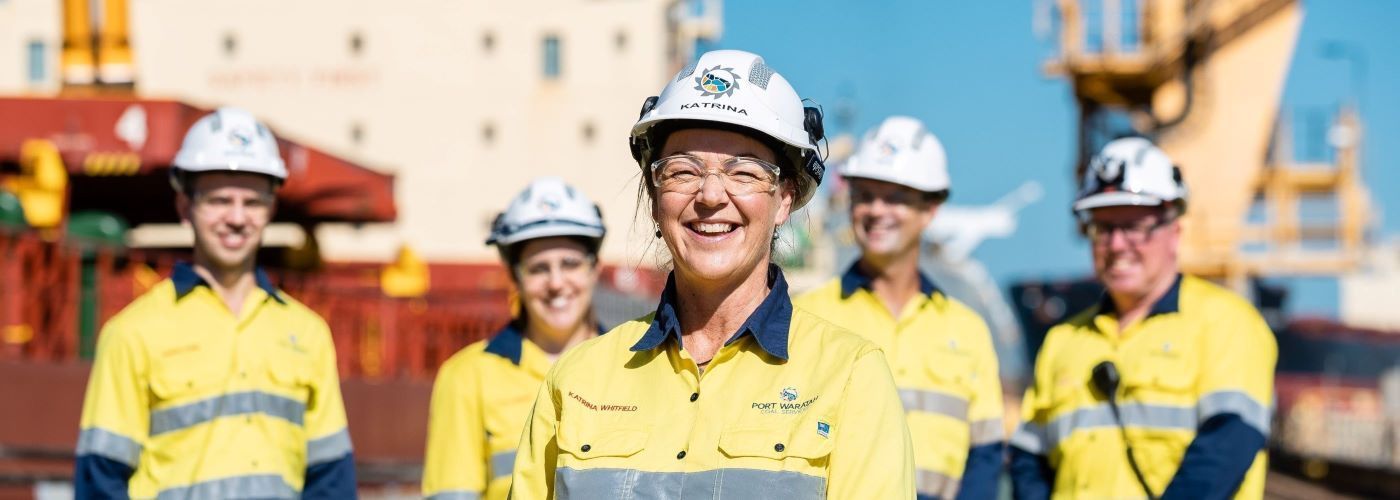
Leadership – you don’t always need to look to the top! It would appear, now more than ever, that leadership scrutiny through a political, community or business lens is as intense as it has ever been. The COVID19 pandemic has ensured that leaders globally, at all levels, are being judged through the impacts on community health, the bond of social contracts and the adversity of economic disruption. At more than any other time I can recall throughout my lifetime, leaders are being judged as much for what they don’t do as what they do. Of course, judgement should always start with oneself. Throughout the pandemic, most Australians have generally fared better than many others around the world. I am not a scientist or epidemiologist, and I expect there are health and geographic benefits to living in Australia and our relative success in dealing with COVID19. I believe our political and community leaders have strived for a unified outcome, genuinely worked collectively and collegiately and the broader population has shared in the collective responsibility of the social contract to minimise the devasting impact of COVID19. Working in recruitment I am fortunate to gain insight into an individual’s career ambition, approach, challenges, and fear. In some regards, the conversations have remained constant pre/post COVID19 though extremes are amplified in an economic and employment environment where there is limited opportunity. For the team member who has been years without a performance and development review, let alone a salary review, concern is heightened. When employees have had to reduce pay, accept reduced working hours or be placed on unpaid leave, concern is replaced by anxiety and fear. Who can question employee fear when leaders haven’t implemented performance, development, or salary reviews in the years prior to COVID19 and start economic rationalisation in the middle of a pandemic? It is little wonder employees are anxious and feel totally out of control of their destiny. The reality is some organisations place profit above all else and arguments can be made that they are contemptuous towards employees or have neglected their relationship to nothing more than a paycheque transaction. It remains true that people still leave leaders rather than organisations. At all times, employees look for their leader’s authenticity, transparency, consistency with the ability and passion to communicate across all business levels. In this pandemic, the benchmark is set a little higher – effective leadership needs to be more than cutting costs – employees are attracted to leaders who have positive and constructive internal and external communication skills. They are the brand ambassadors who clearly, readily, and consistently articulate the strategy and value of the company to employees and the market. They are personally genuinely concerned for their staff’s health and well-being and communicate directly with individuals and don’t defer this accountability to adjuncts. Most people still need to go to work every day, and not all businesses have the leaders to drive the turnaround required, nor will all business ultimately survive this global pandemic. However, individuals need not look up for leadership. They should look firstly at themselves or across their colleagues for leadership. I am often reminded and inspired by the people I have worked with who are now leaders of their own organisations. A couple who readily come to mind are Robert Bromage of IntelliHR and Sarah Rajic of Capital Recruit. I was fortunate to work with both early on in their careers and from my earliest memory they had a commitment to their effort, the ability to overcome obstacles, a belief in themselves, the confidence to ask questions and the resilience to overcome challenges. They are both successful entrepreneurs in today’s challenging and ever-changing human capital industry. Importantly they weren’t people I reported to; however, I find their leadership rewarding and inspiring. I watch with an active interest in their success and hope to learn from it. If looking within yourself or your team for leadership, I recommend reading Dr Ric Charlesworth’s book ‘The Coach’. Dr Charlesworth is somewhat of a chronic underachiever – a medical doctor, a parliamentarian, an elite sports performer across multiple disciplines, a 4-time Olympic athlete and the coach of 2 Olympic Gold medal teams. However, even in his storied career, much of his innovation around team and leadership was challenged. Two of his concepts that have resonated with me are those of ‘social loafing’ and ‘a leaderful team’. Social loafing is described by Dr Charlesworth as an attitude or behaviour which says, ‘someone else will do it’ or ‘it is someone else’s problem’. Even those who might feel marginalised in their career or not in control can demonstrate base levels of self-leadership in eliminating ‘social loafing’. What can I do, take the initiative, develop a skill, or take up a course? The concept of ‘A Leaderful Team’ involves as many leaders as possible. In a work environment they don’t need to be a manager – encourage your peers and colleagues. Create a diversity of views and allow a greater number of people to excel in a shared high-performance environment and drive the team to greater success. Encourage all team members to be more inquisitive, more creative and value their participation and contributions. Dr Charlesworth believes this approached made individuals in the team more aware of their responsibilities and expanded the critical mass of leaders in the team who ultimately defended their 1996 Atlanta Olympics Gold medal by repeating their success in Sydney 2000. Ideally, you will work in an organisation with a clear strategy for the future, have a leader who balances the needs of its employees and positioning the business for future growth and is authentic in everything they do. Even if you have this leadership, think about ‘social loafing’ and your role in ‘A Leaderful Team’ and take responsibility for your growth. If you work in an organisation where leadership doesn’t meet the needs of the current environment, your greatest accountability is to ensure you do all you can to position yourself for the next career challenge. Written by David Gallagher , General Manager NSW

We have hit February: the festivities have finished up, and everyone is back at work. You’re looking at your screen, and motivation is low! Between those holiday sun-soaked pool days, home improvements and family outings you’ve realised you’re not where you want to be career-wise. Where did you veer off the path, and how do you set yourself back on track? Explore and Analyse. Reflect on the year that just passed, what did you not like about your job? Was it the workplace or the role? Were you held back by yourself or circumstance? Think about the industries and subjects you find yourself gravitating to when reading articles or flicking through social media. Even consider what your childhood dreams where when younger. What did you want to be when you grew up? Research and Plan The more information you have, the easier it will be to make decisions. Once you are loaded with knowledge, set goals so you can track your progress. Make a plan of how you’ll reach those goals. Suppose your goal is to move up or across in your current workplace, look at what you have to offer. Start taking note of your measurable achievements, transferable skills, and professional offering. Look at some online or part-time courses to beef up your skill set or investigate volunteer roles to give you practical experience. Consider a Mentor or Sponsor. Is there someone within your current work you respect and can learn from? If not look at external sources like networking groups. Additionally, if your goal requires you leaving your workplace, keep an eye on the employment websites, get your resume new job-ready and scope out some viable referees that won’t jeopardise your current role. Check your LinkedIn profile is current, relevant, and professional and make sure your Facebook profile is set to private. You would also benefit from building a network. Get your name out there. Attend networking events or be active on digital platforms such as LinkedIn. Be Realistic. We are living in unprecedented times, be realistic with your expectations and goals. If your workplace has struggled to survive, can they realistically promote anyone in the near future? Likewise, if your dream industry collapsed during COVID give it some time to recover before risking your current secure employment. On the flip side it may be the most opportune time. Companies that downsized will have smaller teams and more responsibilities shared amongst fewer employees. An excellent opportunity for you to take on more responsibility and demonstrate your transferrable skills. Alternatively, some industries grew rapidly with the pandemic and have many new opportunities available. Have a look at what is out there and be open minded to the opportunities that present themselves.

Recruitment, like many industries, has seen a significant transformation in recent years. A diverse and dynamic workforce is crucial, and the role of women in the field is more important than ever. Australian Women in Recruitment (AWIR), a community group founded by women at LinkedIn, is on a mission to empower and uplift female leaders in the Australian recruitment industry. I recently had the privilege of attending an enlightening seminar hosted by AWIR, which brought together three outstanding leaders in the recruitment field. This article will delve into the key takeaways and insights from this seminar, shedding light on the challenges and successes of women in recruitment. The AWIR Initiative AWIR, a passionate community of women in recruitment, has set out to create a platform for conversation, learning, and community-building within the industry. Their goal is to empower both current and future female leaders in recruitment by providing a space for discussion, networking, and knowledge-sharing. The seminar showcased the incredible achievements of women in the industry, highlighting the challenges they have faced and the impacts they have made. It is not only a celebration of their successes but also an opportunity to learn from their journeys and apply those lessons in our own careers. The Gender Disparity in Recruitment LinkedIn reports that approximately 64% of recruitment consultants are women, indicating a significant presence of women in the industry. However, when we look at upper management positions within recruitment, the number drops to a mere 31%. This glaring disparity is a reminder that there is much work to be done in fostering gender equality and empowering women to rise through the ranks of leadership roles in the field. Key Takeaways from the Seminar The AWIR seminar featured three prominent leaders in the recruitment industry who shared their insights, challenges, and the impact they have made. Here are the key takeaways from these inspirational women: Data-Driven Leadership : One crucial skill for leaders in the recruitment industry is the ability to draw insights from data. It’s not enough to rely solely on experience and intuition. Effective leaders combine data analysis with their existing knowledge to build relationships and make informed decisions. This is how you become an expert in your field. Personal Branding : Building a personal brand is essential, especially in a people-centric industry like recruitment. People are more likely to trust and connect with you as an individual before they buy into your services. Keeping your personal branding natural and in alignment with your values and identity helps create a strong personal brand. Remember, on platforms like LinkedIn, it’s about fostering conversations and connections, not about presenting perfection. Self-Understanding for Leadership : As women move into leadership roles, understanding themselves, their values, and motivations is key. This self-awareness allows them to better understand, advise, and manage others. By harnessing their unique strengths and qualities, female leaders can navigate the challenges of leadership with confidence. Acknowledgments The AWIR seminar was a powerful and enlightening event, made possible by the dedication of LinkedIn and the wisdom shared by the remarkable speakers. We extend our gratitude to LinkedIn for organizing such an enriching event, and to the seminar’s speakers for sharing their expertise. In conclusion, women in recruitment are a formidable force, contributing significantly to the industry. However, gender disparities persist, particularly in leadership roles. AWIR and events like the one I attended are vital steps toward empowering and uplifting female leaders in recruitment. By embracing data-driven leadership, personal branding, and self-awareness, women can continue to shatter the glass ceiling and inspire the future generations of leaders in the recruitment industry. The path to gender equality and diversity is one we must all tread together, supporting each other and learning from the remarkable women who have already paved the way. Article written by Mhairi Lamrock-Pierce

Are you struggling to get noticed when applying for job opportunities? Do you meet the requirements of the role, but are still not progressing any further in the recruitment process? In most cases, your formal application is the first and only impression of you as a candidate, to recruiters and hiring managers. Here are my top recommendations for presenting a professional job application: Take the time to create a tailored cover letter. Research the company you are applying for and align your prior experiences to both the role and company. Respond directly to the criteria on the job advertisement. Match the requirements of the role to your skillset, experiences, responsibilities and qualifications. Address your motivation for the role. Highlight key achievements; even better if you can back this up with data. Ensure your career summary clearly defines the company, role and dates of employment. Reference your role responsibilities in dot-point format; keep your sentences short and concise. List the most relevant responsibilities first. Withhold any irrelevant information or accomplishments that may not provide value to your application. Written by Hayley Heaton

Port Waratah Coal Services has been receiving, stockpiling, blending and loading coal for export at the Port of Newcastle for over 40 years. They own and manage the Kooragang and Carrington Coal Terminals, with a combined capacity of 145 million tonnes per annum (mtpa). They have approximately 330 employees working across their business, operating their terminals 24 hours per day, 7 days a week.
